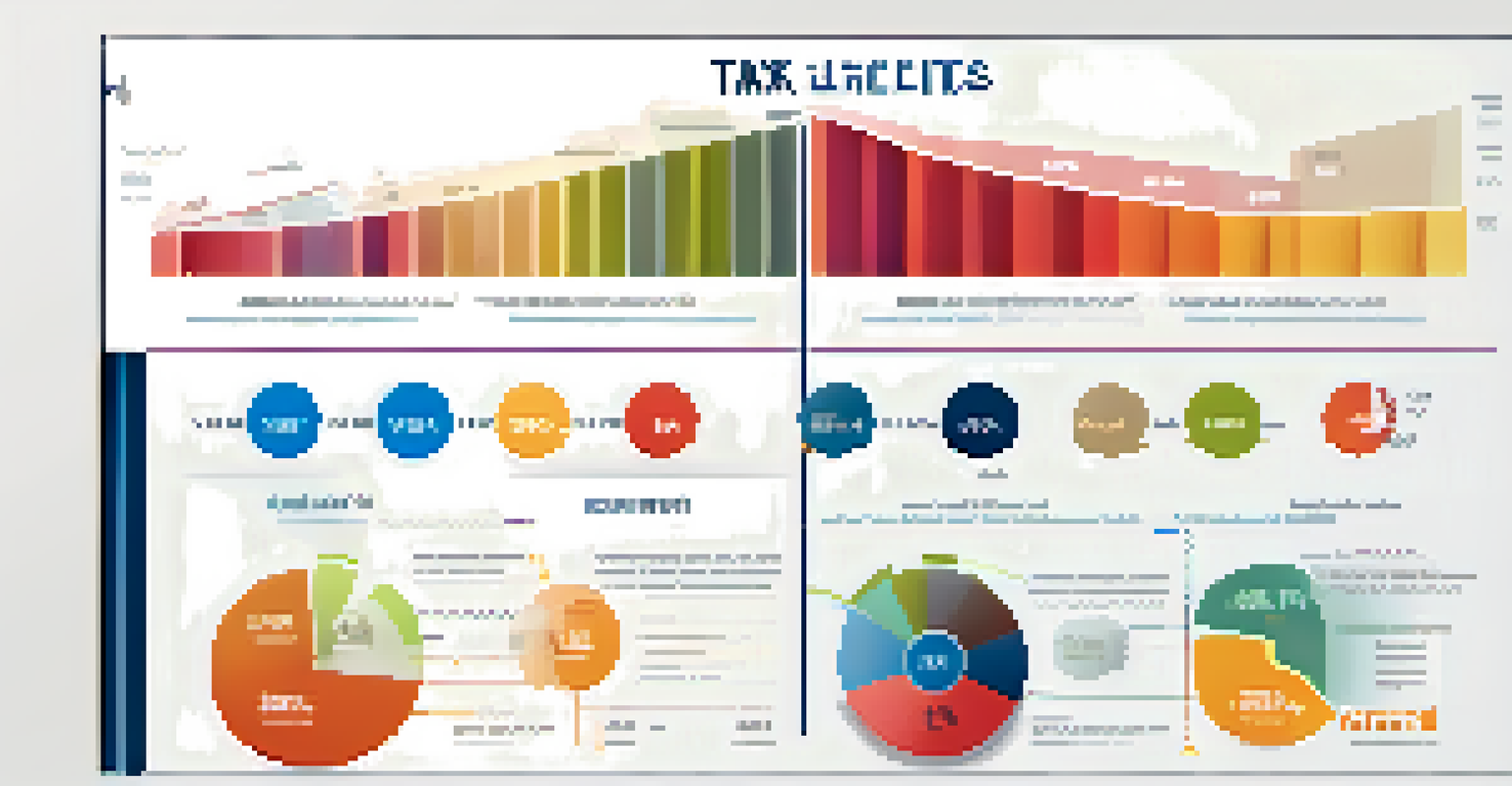Understanding Tax Brackets: How to Optimize Your Income Tax

What Are Tax Brackets and How Do They Work?
Tax brackets are ranges of income that are taxed at specific rates. The tax system in many countries, including the U.S., operates on a progressive model, meaning that as your income increases, so does your tax rate for each bracket. For example, if you earn $50,000, only a portion of that income falls into the higher tax brackets while the rest is taxed at lower rates.
The hardest thing in the world to understand is the income tax.
Understanding how these brackets function can help you estimate your tax liability and make informed financial decisions. The nuances of tax brackets might seem complicated at first, but with a little breakdown, it becomes clearer. Knowing your bracket can also guide you in planning your finances to minimize taxes effectively.
Keep in mind that tax brackets can change yearly, so it's essential to stay updated. This can affect how you plan for tax season, especially if you're nearing a bracket threshold. By understanding tax brackets, you're better equipped to navigate your financial landscape.
The Importance of Taxable Income in Brackets
Your taxable income is the amount of income that is subject to tax after deductions and exemptions are applied. Deductions can significantly impact which tax bracket your income falls into, so knowing how to maximize them is crucial. For instance, contributing to retirement accounts or claiming education credits can reduce your taxable income.

By lowering your taxable income, you can potentially keep yourself in a lower tax bracket, which means you pay a smaller percentage of your income in taxes. This strategy is particularly beneficial as you approach higher tax brackets. Understanding how deductions work allows you to take control over your tax situation.
Understanding Tax Brackets
Tax brackets are ranges of income taxed at specific rates, with higher earnings falling into higher brackets.
It's a good practice to review your deductions each year, as they can change based on new laws or personal circumstances. For instance, if you start a new job or have a child, your eligible deductions may increase. Keeping track of these changes can be the key to optimizing your income tax.
Strategies to Optimize Your Tax Bracket
One effective strategy for optimizing your tax situation is to manage your income levels. For example, if you're close to moving into a higher tax bracket, you might consider delaying income to the following year. This could be as simple as postponing a bonus or freelance payment until January.
In this world, nothing can be said to be certain, except death and taxes.
Another method is to leverage tax-advantaged accounts like IRAs or HSAs. Contributions to these accounts can reduce your taxable income, allowing you to stay within a lower tax bracket. Plus, these accounts often provide additional long-term benefits, such as tax-free growth or withdrawals when used for qualified expenses.
It's also wise to periodically reassess your financial situation. Regularly reviewing your income, deductions, and credits can reveal new opportunities for tax optimization. The goal is to create a proactive tax strategy that adapts to your changing financial landscape.
The Role of Deductions and Credits
Deductions and tax credits play a vital role in determining how much tax you owe. While deductions reduce your taxable income, credits directly reduce the amount of tax you owe, dollar for dollar. Understanding the difference between these two can help you strategize effectively for tax season.
For example, if you're eligible for a credit worth $1,000, that's a direct reduction of your tax liability, whereas a deduction of $1,000 might only save you a fraction of that amount based on your tax rate. This distinction can make a significant difference in your overall tax bill, so it's worth doing your homework.
Importance of Deductions
Maximizing deductions can significantly lower taxable income, helping individuals stay in lower tax brackets.
Be sure to research available deductions and credits that you may qualify for. Some common ones include the Child Tax Credit and the Earned Income Tax Credit. Utilizing these can provide substantial savings, especially for families and individuals with lower incomes.
Understanding Capital Gains Tax and Its Brackets
Capital gains tax is applied to the profit made from selling an asset, such as stocks or property. The rate at which these gains are taxed depends on how long you held the asset. Short-term capital gains, for assets held less than a year, are taxed at your ordinary income tax rate, while long-term gains benefit from lower rates.
For example, if you sell a stock after holding it for several years, you might pay a significantly lower tax rate than if you sold it just weeks after purchase. This incentivizes long-term investment strategies, which can help you optimize your tax situation. Understanding these distinctions can guide your investment decisions.
Being strategic about when you sell assets can have a substantial impact on your overall tax liability. If you're near the end of the year, consider how your sales might affect your tax bracket. Delaying a sale until the next year might help you avoid crossing into a higher bracket.
The Impact of Retirement Contributions on Tax Brackets
Contributing to retirement accounts, such as a 401(k) or IRA, can be a smart way to optimize your tax situation. Contributions to these accounts reduce your taxable income, which can help you stay within a lower tax bracket. It's like getting a two-for-one deal: you save for the future while lowering your current tax bill.
For instance, if you earn $60,000 and contribute $5,000 to your 401(k), your taxable income drops to $55,000. This could mean a lower tax rate applied to your income, saving you money in taxes. Additionally, the money in these accounts grows tax-deferred, meaning you won't pay taxes on it until you withdraw it in retirement.
Consulting Tax Professionals
Tax professionals offer personalized advice and insights that can help optimize tax strategies and compliance.
It's important to keep in mind the contribution limits set by the IRS, which can change annually. Staying informed about these limits can maximize your contributions and, ultimately, your savings. Planning for retirement not only secures your future but can also provide immediate tax benefits.
Consulting a Tax Professional for Personalized Advice
While understanding tax brackets and strategies is important, consulting a tax professional can provide personalized insights tailored to your situation. Tax professionals can help you navigate the complexities of tax laws and identify specific opportunities for optimization that you may not be aware of. It's like having a GPS for your tax journey.
They can also keep you updated on any changes in tax legislation that could impact your planning. Tax laws can be intricate and subject to change, and having an expert on your side helps ensure you’re making the most informed decisions. This can ultimately save you time and money in the long run.

Whether it’s preparing your tax return or strategizing for the future, a tax professional can be an invaluable resource. Investing in their expertise can lead to better financial outcomes, allowing you to focus on what truly matters—building your wealth and achieving your goals.